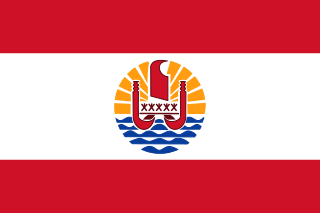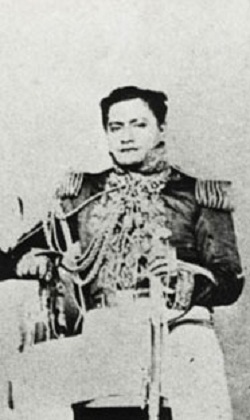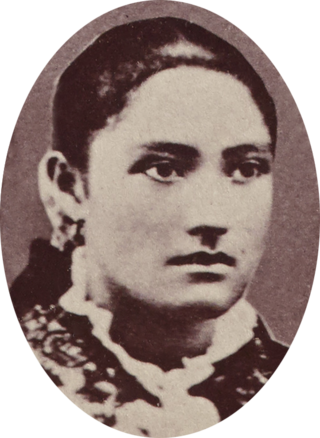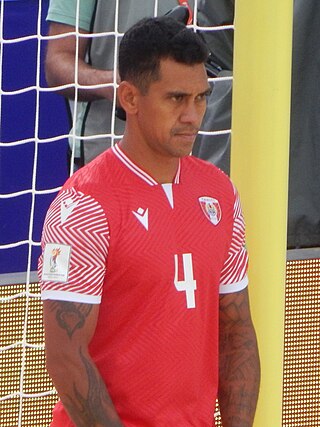
Teva Victor (born 30 September 1971 in Bora Bora) is a French sculptor living in Punaauia, on the island of Tahiti in French Polynesia, France.

Teva Victor (born 30 September 1971 in Bora Bora) is a French sculptor living in Punaauia, on the island of Tahiti in French Polynesia, France.
Teva grew up on a small islet called Motu Tane not far from the main island of Bora Bora. He is the son of famous French explorer Paul-Emile Victor. [1] He attended high school in Hawaii and college in San Francisco. [2]
Introduced to art through his father's drawings, it was at the age of 18 that a family friend, working on the motu, introduced him to wood carving. He is self-taught and liked to work on living or rooted trees. But from 2001, he preferred to devote himself to volcanic stone, which he describes as "timeless and immutable". [1]
Teva began a career as a presenter and producer of television shows. In 1998 he presented the program Teva, documentaries on peoples and civilizations living in harmony with nature such as the Dogons, the Waoranis and the Toradja, for la Cinquième. [3] However, he returned to sculptures. His sculptures are often two-sided faces. They are both ancient Marquesan tiki, figurative busts of Vaiere Mara, and sometimes have an African influence. [4]
In 2012 he began exhibiting his stone sculptures at the Maison de la culture in Papeete.[ citation needed ] In February 2014 he joined the Center de Création Contemporaine Teroronui Papeete (CCCTP) for a collective exhibition alongside Chief Miko, Jonathan Bougard and photographer Massimo Colombini. The CCCTP was a transdisciplinary collective. The same year Teva sold a work to Joel Silver and a sculpture to Arnon Milchan. [5] In 2015, he sold several works to Guy Laliberté. [6]
In September 2015 he joined twenty Polynesian artists at the University of French Polynesia for a collective exhibition supporting contemporary creation and artists. His works were exhibited alongside those of Chief Miko and Andreas Dettloff. [7]
At the end of 2015 he worked in situ with free access on a massive stone sculpture in the Maison de la culture. The sculpture was installed in front of the Grand theater of the Maison de la culture. [8] [9] In 2017 he made an 800 kilo stone representation of Queen Pomare IV which was installed in the Queen’s gardens in Papeete. [10] He has stated that his life philosophy is "nothing can match the beauty of nature. We are only there to bring a nod to our passage." [11] [12]
In October 2021 he completed a head with immense eyes and a luscious mouth, a commission intended for the decor of a British mansion. [13] It is a large work, approximately 1.50 m. Its weight is between 1.2 and 1.5 tonnes. [14]

French Polynesia is an overseas collectivity of France and its sole overseas country. It comprises 121 geographically dispersed islands and atolls stretching over more than 2,000 kilometres (1,200 mi) in the South Pacific Ocean. The total land area of French Polynesia is 3,521 square kilometres (1,359 sq mi), with a population of 278,786 of which at least 205,000 live in the Society Islands and the remaining population lives in the rest of the archipelago.

Tahiti is the largest island of the Windward group of the Society Islands in French Polynesia, an overseas collectivity of France. It is located in the central part of the Pacific Ocean and the nearest major landmass is the North Island of New Zealand. Divided into two parts, Tahiti Nui and Tahiti Iti, the island was formed from volcanic activity; it is high and mountainous with surrounding coral reefs. Its population was 189,517 in 2017, making it by far the most populous island in French Polynesia and accounting for 68.7% of its total population; the 2022 Census recorded a population of 191,779.

Papeete is the capital city of French Polynesia, an overseas collectivity of the French Republic in the Pacific Ocean. The commune of Papeete is located on the island of Tahiti, in the administrative subdivision of the Windward Islands, of which Papeete is the administrative capital. Both the President of French Polynesia and French High Commissioner reside in Papeete.

Pōmare IV, more properly ʻAimata Pōmare IV Vahine-o-Punuateraʻitua, was the Queen of Tahiti between 1827 and 1877. She was the fourth monarch of the Kingdom of Tahiti.

Tamatoa V, born Tamatoa-a-tu Pōmare,, King of Raiatea and Taha'a, was a son of Queen Pōmare IV of Tahiti.

The Assembly of French Polynesia is the unicameral legislature of French Polynesia, an overseas country of the French Republic. It is located at Place Tarahoi in Papeete, Tahiti. It was established in its current form in 1996 although a Tahitian Assembly was first created in 1824. It consists of 57 members who are elected by popular vote for five years; the electoral system is based upon proportional representation in six multi-seat constituencies. Every constituency is represented by at least three representatives. Since 2001, the parity bill binds that the number of women matches the number of men elected to the assembly.

Paul-Émile Victor was a French ethnologist and explorer.

The Society Islands are an archipelago in the South Pacific Ocean that includes the major islands of Tahiti, Moʻorea, Raiatea, Bora Bora and Huahine. Politically, they are part of French Polynesia, an overseas country of the French Republic. Geographically, they form part of Polynesia.

Bora Bora Airport, also known as Motu Mute Airport, is an airport serving the island of Bora Bora in French Polynesia. It is located on the islet of Motu Mute.

MS Paul Gauguin is a cruise ship that was completed in 1997. It primarily operates in the South Pacific. Paul Gauguin Cruises is headquartered in Bellevue, Washington.
The Pōmare dynasty was the reigning family of the Kingdom of Tahiti between the unification of the islands by Pōmare I in 1788 and Pōmare V's cession of the kingdom to France in 1880. Their influence once spanned most of the Society Islands, the Austral Islands and the Tuamotu Archipelago.

Teriitaria II or Teri'itari'a II, later known as Pōmare Vahine and Ari'ipaea Vahine, baptized Taaroamaiturai, became Queen consort of Tahiti when she married King Pōmare II and later, she ruled as Queen of Huahine and Maiao in the Society Islands.

Teriʻivaetua was a member of the Pōmare Dynasty and the heiress apparent when the Kingdom of Tahiti was annexed by France in 1880. Her name Teri'i-vae-tua means Sovereign-distributing-the-ocean in Tahitian.

Tamatoa IV, also named Moe'ore Teri'itinorua Teari'inohora'i (1797–1857) was the king of Raiatea and Tahaa from 1831 to 1857.

Missionary Day is an official holiday in French Polynesia, an overseas collectivity of France. It is celebrated annually on 5 March, to mark the arrival of the London Missionary Society (LMS) missionaries in 1797 when their ship Duff landed at Matavai Bay. It is a non-working holiday.

The annexation of the Leeward Islands or the Leewards War was a series of diplomatic and armed conflicts between the French Third Republic and the native kingdoms of Raiatea-Tahaa, Huahine and Bora Bora, which resulted in the conquest of the Leeward Islands, in the South Pacific archipelago of the Society Islands in modern-day French Polynesia.

Heimanu Philippe Taiarui is a beach soccer and association football player from French Polynesia who plays as a defender. He has appeared at six editions of the FIFA Beach Soccer World Cup representing the Tahitian national team, finishing as a runner-up twice ; at the former, he won the Golden Ball award.

Michel Toofa Pouira Krainer, known as Chief Miko is a French Polynesian speaker, sculptor, traditional navigator, musician, singer, customary chief and activist. He played a major role in the Polynesian cultural revival, particularly in the revival of Polynesian tattoos.
Jonathan Bougard is a French designer and documentary film director active in French Polynesia since 2005.
Fenuapeho (1773–1831) was the chief of the island of Tahaa. He served as the regent of Tahaa on behalf of the grandson of Chief Tapoa I.